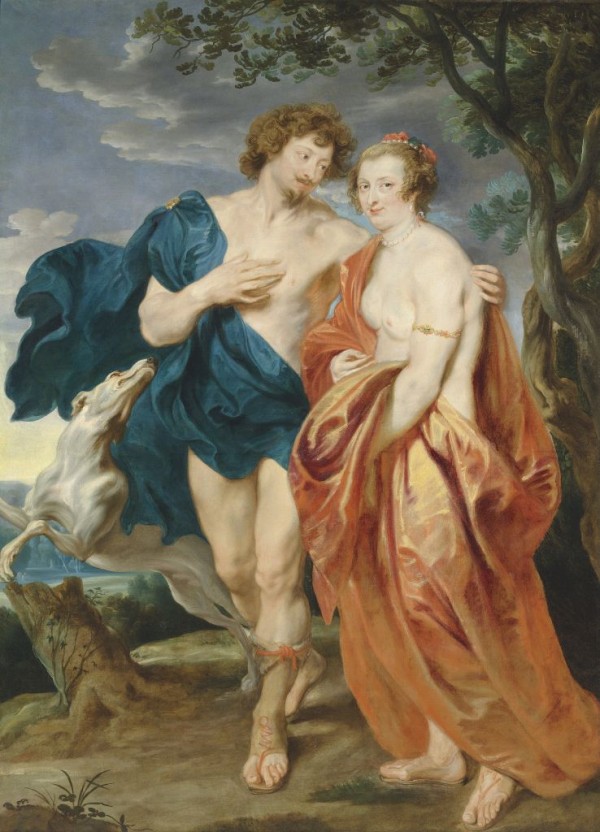Outing the Past?
Do we have the right to ‘out’ figures from the past as LGBTQ+? Would they accept, welcome or agree with us and the language used today?

The marriage portrait of George Villiers Duke of Buckingham (1592-1628), and Katherine Manners (1603-1649), shown full height as Venus and Adonis
Anthony van Dyck, 1620-1621
Liberty Globus C.V., c.q. Albada Jelgersma family, on loan to Het Noordbrabants Museum, Hertogenbosch, Netherlands
“If both King James and Villiers had wives, they must have been straight.”
This sentiment has been a convenient way for previous historians to hide to richness of LGBTQ+ life. People’s identities, loves and ways of expression are part of a conversation within a broad scale. To love both men and women, to love beyond binary sits meaningfully within this.
There is no one queer experience – life and love are lived at intersection. Ultimately, we will never know how Villiers felt or loved explicitly – however we can make space for queer possibility. Space to recognise that binary gay and straight definitions are only one part of the conversation.
Queer possibility is powerful here - what will you find?

Queerness has always been here – although sometimes in British history it sits in a landscape of illegality. Evidence is subjective and hard to find, because queerness was perhaps considered something to be hidden, an act as opposed to an identity. Today LGBTQ+ history rapidly continues to change, bloom with beauty and incorporate new language. Part of this is the ‘feeling’ of queerness - vital to embrace in how we look at LGBTQ+ histories. A recognition, an unspoken word, a familiarity, an instinct that helps in finding queerness based on lived experience.
It’s in this recognition we consider why exploring queer histories is so important. Not necessarily to out figures from the past, but to confirm what sometimes hides in plain sight. Queering holds a mirror to us, giving an outlet to share our lives, loves and expression. Villiers starts the conversation; you are at the heart of it.
Language and Why it Matters
LGBTQ+ Lesbian, Gay, Bi and Trans, Queer and/or Questioning plus members of the community with other identities and orientations.
LGBTQIA+ Lesbian, Gay, Bi, Queer and/or Questioning, Trans, Intersex, Asexual, Aromantic, or Agender plus members of the community with other identities and orientations.
Queer We recognize that for some people this word is uncomfortable or deeply divisive. It can represent both discrimination and pain or joy and celebration. Our aim here is to earn and deserve trust in using this word and to understand why we are doing so. Queer recognizes the intersection of so many different identities in the LGBTQ+ community. For us it is the most inclusive term we can use, but that doesn’t mean that we are trying to erase anyone's identity or dismiss their experiences. We are trying to use this word positively and invite you to be included in a conversation about how we use it.
Culture Leicestershire is committed to celebrating and representing all of the communities we serve.
